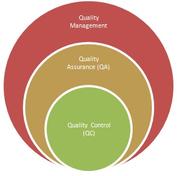Alpha Testing vs. Beta Testing: Key Differences Explained
Advertisement
When developing software meant for a wide audience, it’s crucial to identify and fix errors that might only surface when real users interact with the product. This is where alpha and beta testing come into play. Both are essential steps in the software development lifecycle, but they serve different purposes and are conducted under different conditions. This article will break down the differences between these two crucial testing phases.
Understanding Alpha Testing
Alpha testing is the initial phase of testing, performed in-house, usually by the development team or dedicated testers within the company. Think of it as a dress rehearsal before the actual performance.
Here’s a breakdown of its key characteristics:
- Location: Conducted at the developer’s site.
- Participants: Primarily performed by internal testers, who might even be developers themselves, acting as stand-ins for the end-users.
- Observation: Developers are present during testing, actively observing and recording any issues that arise.
- Environment: Takes place in a controlled, lab-like setting.
Understanding Beta Testing
Beta testing, on the other hand, moves testing out of the development environment and into the hands of real users. This is where the software gets its first real-world test.
Here’s what makes beta testing distinct:
- Location: Conducted at the customer’s or end-user’s site(s).
- Participants: Performed by actual end-users, who may or may not be tech-savvy.
- Observation: Developers are typically not present during testing.
- Environment: Occurs in an uncontrolled environment, mimicking the conditions under which the software will eventually be used.
- Feedback: Users record and report bugs, usability issues, and other problems back to the development team.
- Post-Beta: After necessary adjustments, based on the beta feedback, the final product is released.
Alpha Testing vs. Beta Testing: A Detailed Comparison
The following table highlights the key differences between alpha and beta testing:
| Features | Alpha Testing | Beta Testing |
|---|---|---|
| Who performs it? | Testers (employees, often within the development team) | Clients or end-users |
| Where is it performed? | Developer’s site | Client location or end-user’s premises |
| Which tests are part of it? | Involves both white box and black box testing. Reliability and security testing are not a focus here. | Typically uses black box testing. Reliability, security, and robustness are heavily tested. |
| Lab environment required? | Yes, requires a lab or testing environment | No, real-world conditions are the testing environment |
| Test duration | Long execution cycles are common | Usually requires a few weeks of testing |
| When issues are fixed? | Critical issues are addressed immediately by developers | Issues are collected during beta testing and addressed in future releases |
Why Both Are Necessary
Both alpha and beta testing play a crucial role in ensuring a high-quality, user-friendly final product. Alpha testing helps catch major bugs and usability issues early on, while beta testing exposes the software to diverse real-world conditions and user behavior that may not have been anticipated in a controlled environment. By combining these two testing phases, development teams can gain valuable insights and make necessary changes to deliver a robust and successful software product.
Advertisement
 T&M
T&M 


